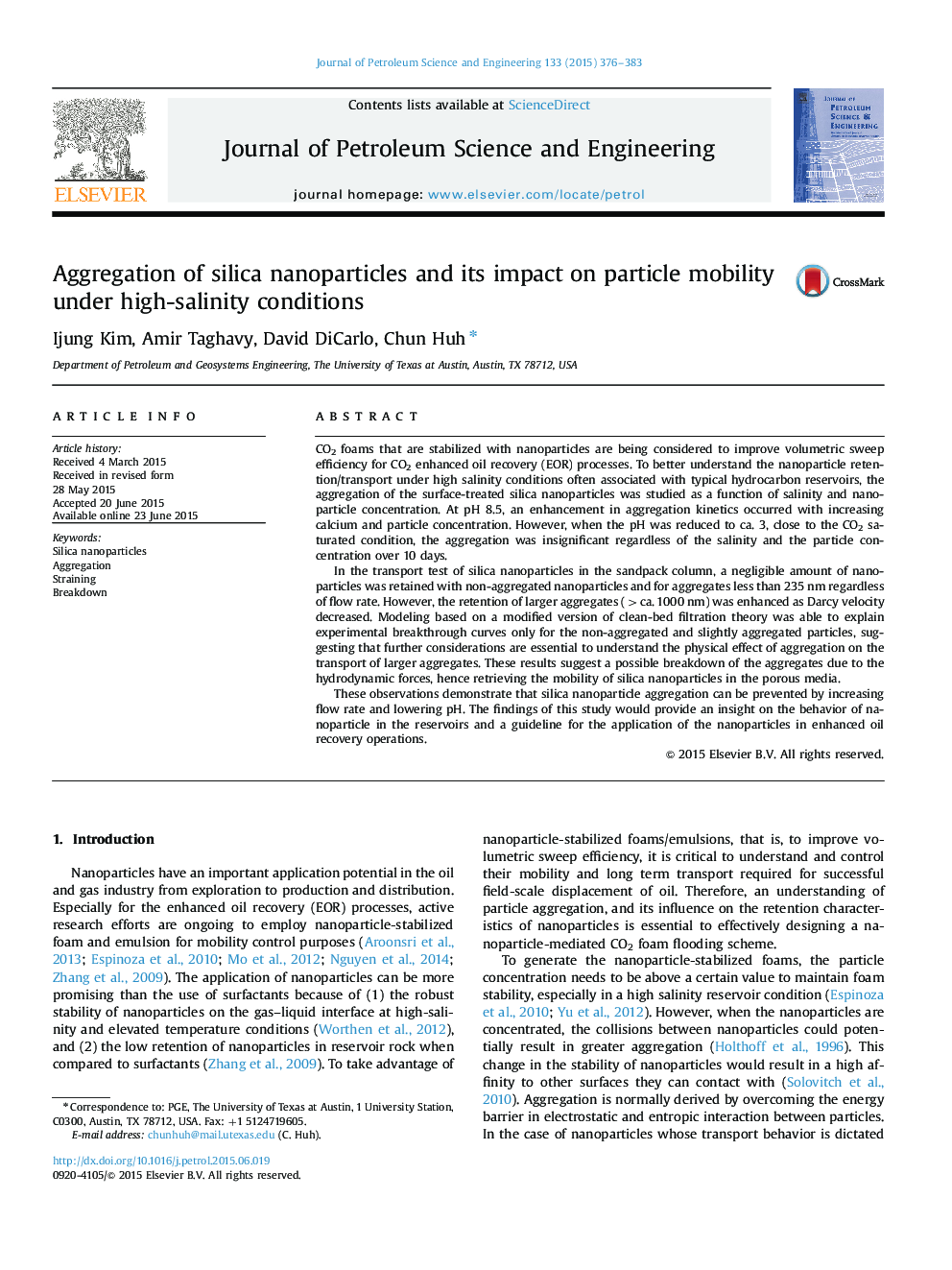| Article ID | Journal | Published Year | Pages | File Type |
|---|---|---|---|---|
| 1754729 | Journal of Petroleum Science and Engineering | 2015 | 8 Pages |
•An enhancement of silica nanoparticle aggregation occurred with increasing pH, nanoparticle concentration, and calcium content.•In the sandpack column flow tests, retention of silica nanoparticle aggregates (>ca. 1000 nm) increased with decreasing Darcy velocity.•Increasing Darcy velocity decreased retention, suggesting breakdown of the aggregates and recovery of the particle mobility in porous media.•The effluent data fitted to the clean-bed filtration models provided a quantitative analysis.
CO2 foams that are stabilized with nanoparticles are being considered to improve volumetric sweep efficiency for CO2 enhanced oil recovery (EOR) processes. To better understand the nanoparticle retention/transport under high salinity conditions often associated with typical hydrocarbon reservoirs, the aggregation of the surface-treated silica nanoparticles was studied as a function of salinity and nanoparticle concentration. At pH 8.5, an enhancement in aggregation kinetics occurred with increasing calcium and particle concentration. However, when the pH was reduced to ca. 3, close to the CO2 saturated condition, the aggregation was insignificant regardless of the salinity and the particle concentration over 10 days.In the transport test of silica nanoparticles in the sandpack column, a negligible amount of nanoparticles was retained with non-aggregated nanoparticles and for aggregates less than 235 nm regardless of flow rate. However, the retention of larger aggregates (>ca. 1000 nm) was enhanced as Darcy velocity decreased. Modeling based on a modified version of clean-bed filtration theory was able to explain experimental breakthrough curves only for the non-aggregated and slightly aggregated particles, suggesting that further considerations are essential to understand the physical effect of aggregation on the transport of larger aggregates. These results suggest a possible breakdown of the aggregates due to the hydrodynamic forces, hence retrieving the mobility of silica nanoparticles in the porous media.These observations demonstrate that silica nanoparticle aggregation can be prevented by increasing flow rate and lowering pH. The findings of this study would provide an insight on the behavior of nanoparticle in the reservoirs and a guideline for the application of the nanoparticles in enhanced oil recovery operations.
Graphical abstractSilica nanoparticle aggregates showed higher mobility with increase of flow rate, suggesting possible breakdown of the aggregates in porous media.Figure optionsDownload full-size imageDownload as PowerPoint slide
